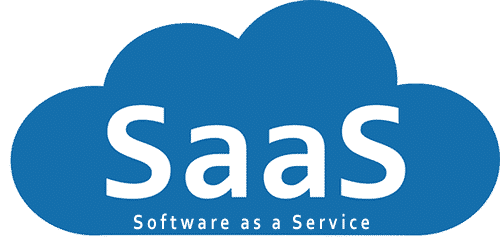Are you struggling with your finances?
A study shows that 6 out of 10 young people lack financial education. This leads many youths to make poor financial choices, credit, and investment decisions. This is why it’s crucial to learn basic financial knowledge early in your life.
Doing so allows you to make better financial decisions and apply effective management. Moreover, it can guarantee a stable, stress-free, and better future. Read on to discover some budgeting tips and start building wealth at a young age.
1. Set Your Financial Goals
Setting financial goals is essential when you plan to build wealth. It allows you to create a plan, track your progress, and stay motivated. Moreover, you make effective management that can boost financial health.
Keep note of your monthly income, expenditures, and other monetary activities. It must show that your finances can reach the target goal.
First, set a definite amount and time frame for reaching your goal. For example, you must save $15,000 by the end of the year. With this, you can determine the amount you to save from your monthly income until the year ends.
Next, assess the effectiveness of the saving system you follow. Then, adjust if you find it hard to stick with it. Consider categorizing your goals into short-term and long-term for easy tracking.
2. Budget Your Finances
Create a budget for your finances when building wealth. It ensures you earn more, spend less, and make wise investments. Budgeting allows you to track expenses and follow a plan that results in financial order.
Create a budget plan based on your income and expenditure. It determines the distribution of your finances in categories. You must identify and rank expenses depending on your priorities, too.
The budgeting techniques you can try are the cash system and the 50/30/20 rule. Each method offers ways to distribute and spend your money.
The cash system makes use of cash and disallows credit cards. It allows easy financial tracking. Moreover, the cash system makes you spend less.
Distribute your finances into 3 categories for the 50/30/20 rule. Allot 50% of your income to needs, 30% to wants, and 20% to savings.
3. Start Saving Now
Growing old does not mean you’ll eventually build wealth over time. You need to be proactive in saving to see substantial results.
First, identify the things that need funding. Ensure to categorize them into short-term and long-term goals. Then, estimate the amount of money you need and the time to reach your goal.
What are things you need to save for as a young adult?
Saving for retirement is vital to guarantee a comfortable life in the future. With this, open an Individual Savings Account or contribute to a retirement plan. You can ask your company if they offer company-sponsored plans.
Unforeseen events, such as unemployment, can exhaust your finances. Thus, consider opening an emergency fund to cover the expenses. Many experts recommend saving up at least 3 months or 6 months’ worth of living expenses.
4. Take Risks
A survey shows that only 23% of respondents consider investing in the stock market. Many hesitate to invest because of fluctuating stocks. With this, they lose opportunities that can boost financial worth.
Note that a declining market provides benefits, too. It’s the best time to invest and buy more shares because of their low value. You can expect a high return and portfolio growth once the market recovers.
Don’t be afraid to consider investing in the stock market. Keep note that you can earn more if you invest earlier. You can ask for financial advice from a Registered Investment Advisor, too.
5. Pay and Avoid Debts
Unpaid debt can build up and exhaust all your available funds. Most of them demand monthly instalment payments and carry high-interest rates. You must pay your debts to prevent using all your money as payment and save more.
Moreover, financial responsibilities increase as you grow older. It makes it hard to manage your finances. Borrowing small amounts when you need it is okay, but try not to fall into a pit of debt.
Stick to your budget, prioritize your needs, and only pay using cash. Being debt-free gives you financial freedom and security.
6. Keep Expenses Low
You can categorize expenses into fixed and variable costs. Fixed costs refer to predictable expenses incurred, such as rent, subscriptions, and insurance. In contrast, groceries and repair fees are variable expenses that can change.
Reduce costs to allot more into your savings and investments. First, categorize expenses and rank them based on their relevance. Then, decide on the items to remove.
For example, you pay a fixed rate for your internet connection and music subscription. The internet connection is a necessity while the latter is a want.
7. Note Your Expenses
Noting every expense is one practice that helps in building wealth. It reflects spending habits that you can use to develop effective financial management. Moreover, it can determine your progress.
You can create a system using a spreadsheet or use a logbook to note expenses. Ask and keep receipts for every transaction. Spare at least 10 minutes of your time at night to input everything.
Check your list every week to assess your spending habits. You must determine if there are changes in prices, too. Adjust your budget, if necessary, based on your notes.
8. Explore More
Never rely on one source of income if you plan to build wealth. Try exploring other streams to generate more finances. Turn your interest or hobby into another source of livelihood.
You can find freelancing jobs on the web that fit your skills. Try opening a small business in your local community, too. Venturing into another job protects you from losses and boosts your financial health.
Building Wealth at a Young Age
Building wealth can seem like a daunting task, but it’s not impossible. The number of expenses increases as you grow older. Create a plan to manage your finances early to enjoy a stress-free and better life in the future.
Be smart with your money and invest in your future. You can contact us here for queries on finance, wealth management, and investments.









